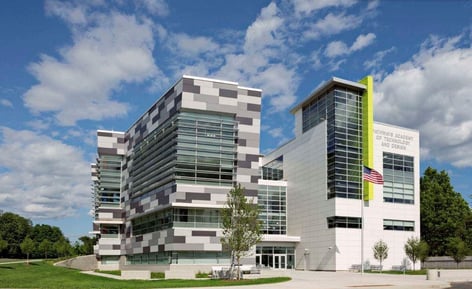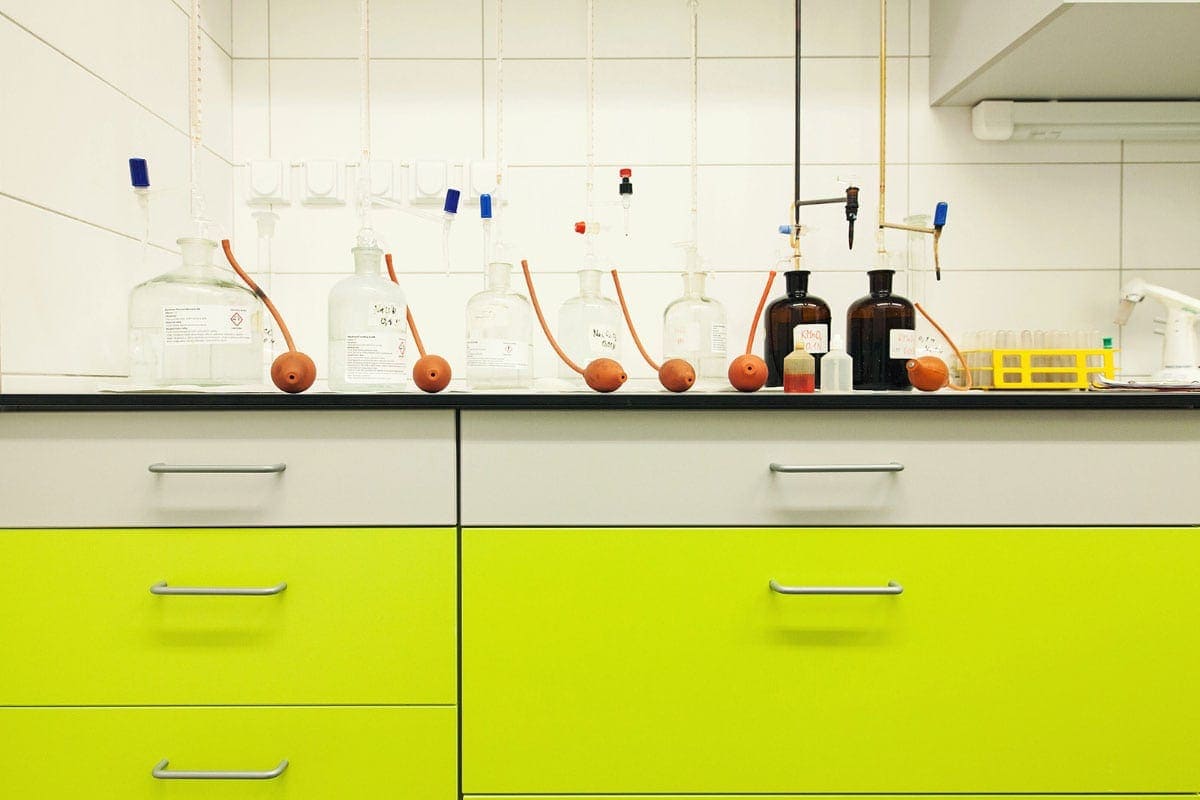.png)
Are Phenolic Panels Sustainable?
| Last updated August 26, 2025
Green building projects and sustainable construction trends are on the rise in North America -- and not just because of environmental regulations. Client demand is the number one factor in green and sustainable building activity in both the United States and Canada.[1]
The evidence is clear: in order to keep pace with environmental regulations and client demands, today’s designers, architects, and builders must invest in sustainable construction.
For over a century, Fundermax has specialized in processing renewable raw materials. As a globally trusted manufacturer of sustainable phenolic panels (also called HPL panels), we are committed to environmental responsibility. This commitment is evident throughout our company operations and the production of our sustainable HPL panels.
Read on for more information on the vital concept of sustainability and how you might incorporate it into your next project.
What Does It Mean to be Sustainable?
First, let’s quickly distinguish between “green” and “sustainable.” The terms are generally used interchangeably, but more specifically, green initiatives are steps in the journey toward sustainability. When a person thinks of “sustainable construction,” they typically think of using renewable or recyclable materials. While that is true, sustainability actually encompasses quite a bit more.
According to the World Green Building Council, to be sustainable means to reduce or eliminate negative environmental impacts and create positive impacts by considering the environment during design, construction, and operation.
Simply put, sustainable construction reduces the industry’s overall impact on the environment not only during construction but also throughout the lifespan of the building.
A building can be sustainable by:
-
using renewable and recyclable materials in construction
-
using materials that are ethical and non-toxic
-
reducing building material waste
-
using proper insulation to reduce heat loss
-
ensuring good indoor air quality
-
implementing pollution and waste reduction measures
-
using solar panels to reduce energy consumption
-
using durable building materials that have longevity.
How Can You Tell if a Building Material is Sustainable?
Look at the Product Composition
Consider the composition of the building material or product. What makes up the product? For example, all panels in a Fundermax phenolic wall panel system consist of 65% natural fibers sourced from FSC-certified forests, and 35% resins.
Also, what is not in the product? Equally important is that Fundermax sustainable wall panels do not contain urea-formaldehydes, organic halogen compounds (which can be found in greenhouse gases or PVC), or a host of other problematic ingredients like silica, asbestos, sulfur, or mercury.
Look for Environmental & Product Declarations
An Environmental Product Declaration (EPD) is based on international standards and considers the entire life cycle of a product based on the Life Cycle Assessment (LCA). An EPD is compliant with the ISO 14025 standard for environmental labels and declarations. (This compliance will matter if your building permit requires an environmental impact analysis.)
A Health Product Declaration (HPD) discloses materials or ingredients in a product and their related human health effects. It is the leading standard in the building industry for reporting building product contents and associated health information.
Look for Product & Manufacturer Certifications
Does the product contribute to LEED standards?
LEED (Leadership in Energy and Environmental Design) is a rating system that provides a framework for “healthy, highly efficient, and cost-saving green buildings” and is the most widely used green building rating system worldwide. LEED certification is globally recognized as a symbol of achievement and leadership in sustainability.
Is the product FSC certified?
FSC (Forest Stewardship Council) certification relies on global forest management standards as well as standards for the United States specifically. Certification means that a product comes from “responsibly managed forests that provide environmental, social, and economic benefits.”
Is the product GREENGUARD certified?
GREENGUARD certification means a product has been scientifically proven to help reduce indoor air pollution and the risk of chemical exposure by meeting some of the world’s most rigorous third-party chemical emissions standards.
Why Does Using Sustainable Building Materials Matter?
Reduced Negative Impact on the Environment
The construction industry has a significant impact on the environment, and it is critical to reduce as much of the negative impact as possible by:
-
using renewable, responsibly sourced materials
-
reducing waste by using high-yield materials
-
reducing waste by using durable materials with a long lifespan
-
using materials that promote energy efficiency and low emissions
Cost-Effective Over Time
Many of the same features that reduce environmental impact also serve to save money over time, namely:
-
durability and longevity of materials which reduces the cost of ownership
-
energy efficiency which reduces expenses for building owners and tenants.
Uncompromised Design
Sustainability and premium design are not mutually exclusive. Regardless of the application, sustainable materials can reliably deliver on both design and aesthetics.
Consider these examples:
Sustainable Exterior Wall Panels
Sustainable Interior Wall Panels
Sustainable Lab Work Surfaces
Improved Resale Value
Sustainability is a differentiator for builders and for their buildings. As we mentioned above, the number one factor triggering sustainability in construction is client demand. This, combined with longevity and energy efficiency carries over to positively impacting resale value should you choose to sell in the future.
So, Are Phenolic Wall Panels Actually Sustainable?
The short answer is, it depends. Yes, phenolic (HPL) wall panels can be a sustainable material if you choose to work with sustainable phenolic panel manufacturers.
But, how sustainable are wall panels? That will also depend on which of the various phenolic panel manufacturers you work with. It is absolutely worth finding a manufacturer committed (and certified) to sustainable operations and to producing sustainable HPL panels.
Fundermax has several ISO certifications that demonstrate our company-wide commitment to operating in a responsible manner. These certificates document our energy management, environmental efficiency, and even our own internal environment we provide to our employees to work in a safe and healthy atmosphere. These ISO certifications put a label on the consistent way Fundermax has been operating for decades.
If you would like to learn more about what to look for in a sustainable phenolic panel manufacturer, download our Sustainability Infographic.
[1] https://www.worldgbc.org/sites/default/files/World%20Green%20Building%20Trends%202018%20SMR%20FINAL%2010-11.pdfModified on September 23, 2025







